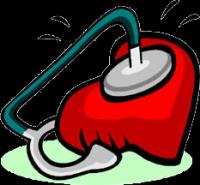Cholesterol 101

Question: My personal diet comprises large amounts of cholesterol (which unfortunately is found in any food product made from animals). I have to rely on low levels of fat and especially saturated fats. If my memory and sources are correct, cholesterol becomes more malignant in the presence of saturated
fats which means that the body perhaps metabolises it (the cholesterol) if
it is sufficiently lean. Have you come across this?Answer: During the Viet Nam war, autopsies performed on American soldiers showed that many suffered from clogged arteries and heart disease in their teens and 20’s. So the young are not immune. You should try to eliminate all meats and dairy foods (especially cheeses) since these are high in cholesterol and saturated fat. It is true that saturated fat is probably the worst culprit. The reason most doctors do not preach this doctrine to patients is that it is almost an impossibility to get patients to conform to any regimen that eliminates all their comfort foods. So, the quick alternative is prescribing statin drugs to control cholesterol. Then patients mistakenly feel they can eat what they choose, because of the “magic pill†(not true) and the Total Cholesterol levels remain in check, but other elevated blood factors will kill you (Homocystine, Lipoprotein A, Fibrinogen, C-Reactive Protein).
 Harvey’s Comment: One of the Gurus I may have referred to previously is William Castelli, who conducted the famous Framingham Study of thousands of patients. The most interesting statistic was that no one with a cholesterol level under 150 experienced a heart attack. While this may not be 100% entirely true, it is an indicator that this theory is on the right track. The reason some people do have heart disease in spite of dissipating in all areas, smoking, drinking, overeating, and then live to a ripe old age (Winston Churchill for example) is that some are fortunate enough to have good genes, heredity and a body that metabolizes cholesterol extra efficiently.
Harvey’s Comment: One of the Gurus I may have referred to previously is William Castelli, who conducted the famous Framingham Study of thousands of patients. The most interesting statistic was that no one with a cholesterol level under 150 experienced a heart attack. While this may not be 100% entirely true, it is an indicator that this theory is on the right track. The reason some people do have heart disease in spite of dissipating in all areas, smoking, drinking, overeating, and then live to a ripe old age (Winston Churchill for example) is that some are fortunate enough to have good genes, heredity and a body that metabolizes cholesterol extra efficiently.
About this entry
You’re currently reading “Cholesterol 101,” an entry on Harvey Tobkes.
- Published:
- 04.12.06 21:00
- Category:
- Health


Comments are closed
Comments are currently closed on this entry.